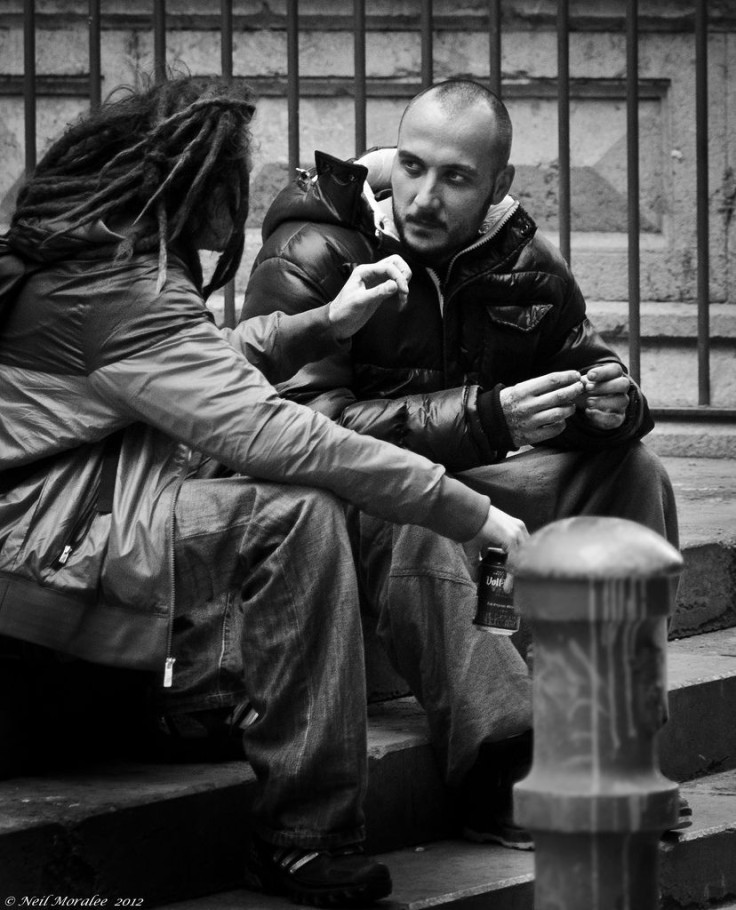Gang Members 25% More Likely To Develop Mental Health Disorders Due To Perpetual Violence

Gangs and gang violence are a major public health problem. Violence is necessary for building and maintaining group cohesion in gangs, and is instrumental for robberies and intimidation, a major way by which gang members make a living. Violence is also essential to their control of illegal drugs markets. So gangs are not just friends hanging out; they are serious menaces to society.
But are gang members also menaces to themselves and their mental health?
A new study of 4,664 men aged 18 to 34 in Britain served to identify associations between violent behaviors and mental issues or use of mental health services, highlighting the specific effects of gang membership.
Of the men surveyed, 70 percent reported that they had not been violent in the past five years, 27 percent said they had assaulted another person or been involved in a fight, and two percent, or 108 of the men, said they were currently a member of a gang. Using these results, the researchers split the participants into three groups for the analysis: gang members, violent men, and non-violent men.
When surveyed regarding psychiatric status, gang members had the most mental health issues. Twenty-five percent of gang members suffered from psychosis, 60 percent had high anxiety, 85 percent were diagnosed with an antisocial personality disorder, and more than half were dependent on drugs or alcohol. This level of psychiatric morbidity is much higher than that seen in the violent and nonviolent men. Of the violent men, only five to 15 percent were addicted to drugs or alcohol, and 30 percent had an antisocial personality disorder.
When asked about seeking care for their psychiatric disorders, gang members appeared to use health care services the most. Twenty eight percent of gang members had sought medical care and 16 percent were on some sort of medication for their mental health. This is much higher than the 11 percent of violent men who had sought care, and the six percent of which were on a medication for mental illness. Expectedly, nonviolent men had an even lower incidence of this.
When it came down to violent tendencies, 70 percent of gang members had violent thoughts and 88 percent said they would be violent if they thought someone was disrespecting their authority. Again, this is far higher than the trends seen among violent and non-violent men; only 17 percent of violent men said they had violent thoughts, and 47 percent admitted to violence if they were disrespected. Attitudes toward violence among nonviolent men were incomparable, as nine percent would act violently if disrespected and three percent had experienced violent thoughts. Clearly, there is a difference in tendencies toward violence between those in gangs and those outside of them (even if they are violent).
But while the gang members were the most violent, most of them feared victimization. Sixty-five percent of gang members admitted that they feared violent victimization, while only 20 percent of violent men and 16 percent of non-violent men felt the same. It seems, then, that gang members have some sort of conscience, as they feel someone will retaliate against them one day for the crimes they have committed. "It is probable that, among gang members, high levels of anxiety disorder and psychosis were explained by post-traumatic stress disorder (PTSD), the most frequent psychiatric outcome of exposure to violence. However this could only partly explain the high prevalence of psychosis, which warrants further investigation," said Jeremy Coid, Ph.D., lead author of this study. PTSD is the most frequent psychiatric outcome of exposure to violence, and the surveys suggest that 15 to 24 percent of those exposed to or fearing violence will develop PTSD, with the highest risk following the event of a violent assault.
Although this study is highly conclusive regarding gang member's mental health, it is somewhat limited. "A potential limitation of the study is that survey participants were aged 18 to 34 and the average age for gang membership is 15. So gang members in this study should be considered 'core' gang members who have not stopped in early adulthood. We need further longitudinal studies to see if our findings are due to factors specific to this group," explained Coid.
Ending gang violence will be beneficial to all, especially to gang members whose mental health is highly damaged by their violent lifestyles. The fear of victimization that gang members admit to health care professionals is an important motivator for leaving gangs, suggesting that health care professionals may have a key role in helping gang members leave the violence behind and move onto healthier, safer lives.
Source: Coid JW, Ulrich S, Keers R, et al. Gang Membership, Violence, and Psychiatric Morbidity. American Journal of Psychiatry. 2013.
Published by Medicaldaily.com



























